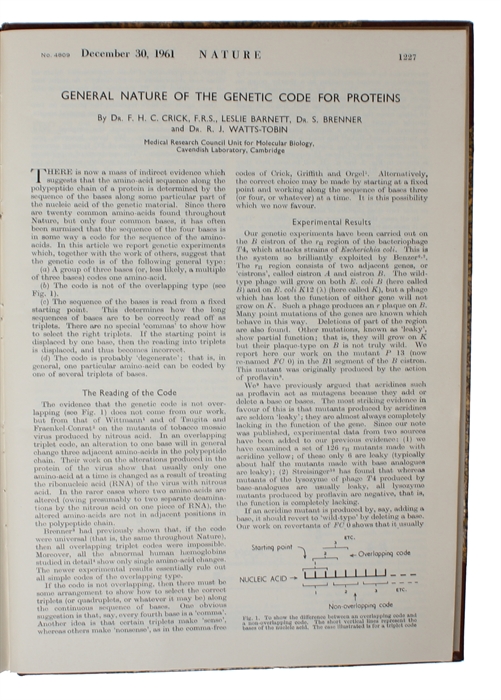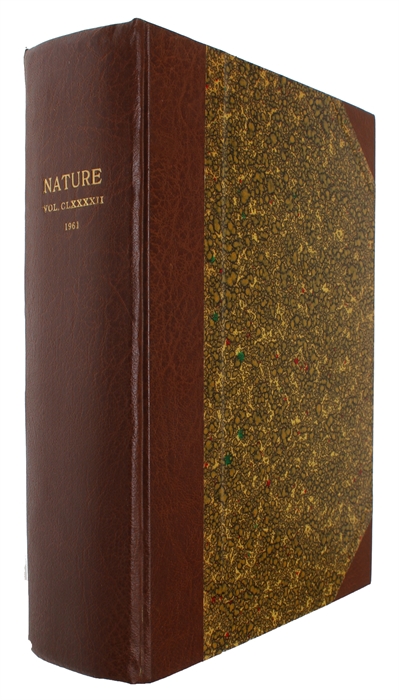THE TRIPLET GENETIC CODE
CRICK, F. H. C., BARNETT, L., BRENNER, S. & WATTS-TOBIN, R. J.
General Nature of the Genetic Code for Proteins.
London, Macmillian & Co, 1961.
Royal8vo. Bound in contemporary half cloth with gilt lettering to spine. In "Nature" Vol. 192, October - December, 4797-4809, 1961. Entire volume offered. A stamp on title page. A fine and clean copy. Pp. 1227-1232. [Entire volume: CVII, 1322 pp.].
First printing of this seminal paper in which they described a very elegant series of genetic experiments by which they proved that the genetic code for protein was a triplet code. Garrison-Morton.com 752.7.
"In February 1961, Crick began a series of experiments based on an idea he had about the manner in which a mutation can be "suppressed" by a further mutation. The results led him to support Brenner's suggestion that such "suppressions" are due not to substitution of a different base in a sequence of bases on the DNA molecule, but to addition or deletion of a base. After conducting extensive experiments for some five months, Crick attended a meeting in the Alps. There he mentioned this idea, and the hypothesis "that the code is read in short groups, starting from one end of the gene. The exact starting point is supposed to determine which group is read" (Crick, 1961a, p. 188).
Back in Cambridge Crick carried out further experiments to clinch the case for the "short groups" being composed of three bases or a multiple thereof. In their classic paper summarizing this work, the Cambridge group claimed that the genetic code "is of the following general type": three bases (or a multiple of three) codes for one amino acid. It is not an overlapping code, "probably 'degenerate'; that is, in general, one particular amino-acid can be coded by one of several triplets of bases," and "the sequence of the bases is read from a fixed starting point.… There are no special 'commas' to show how to select the right triplets" (Crick et al., 1961, 1227)." (DSB)
Norman 534
Order-nr.: 59907


